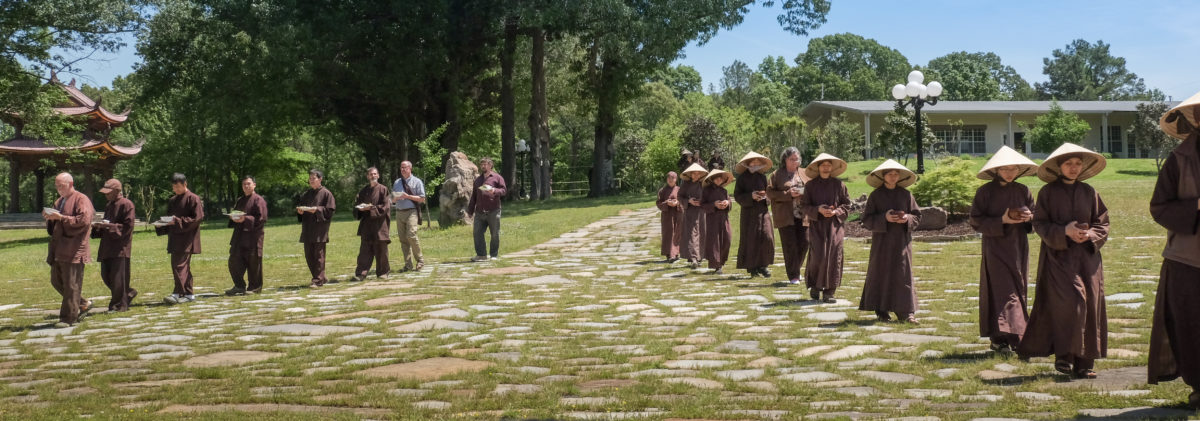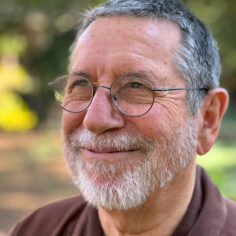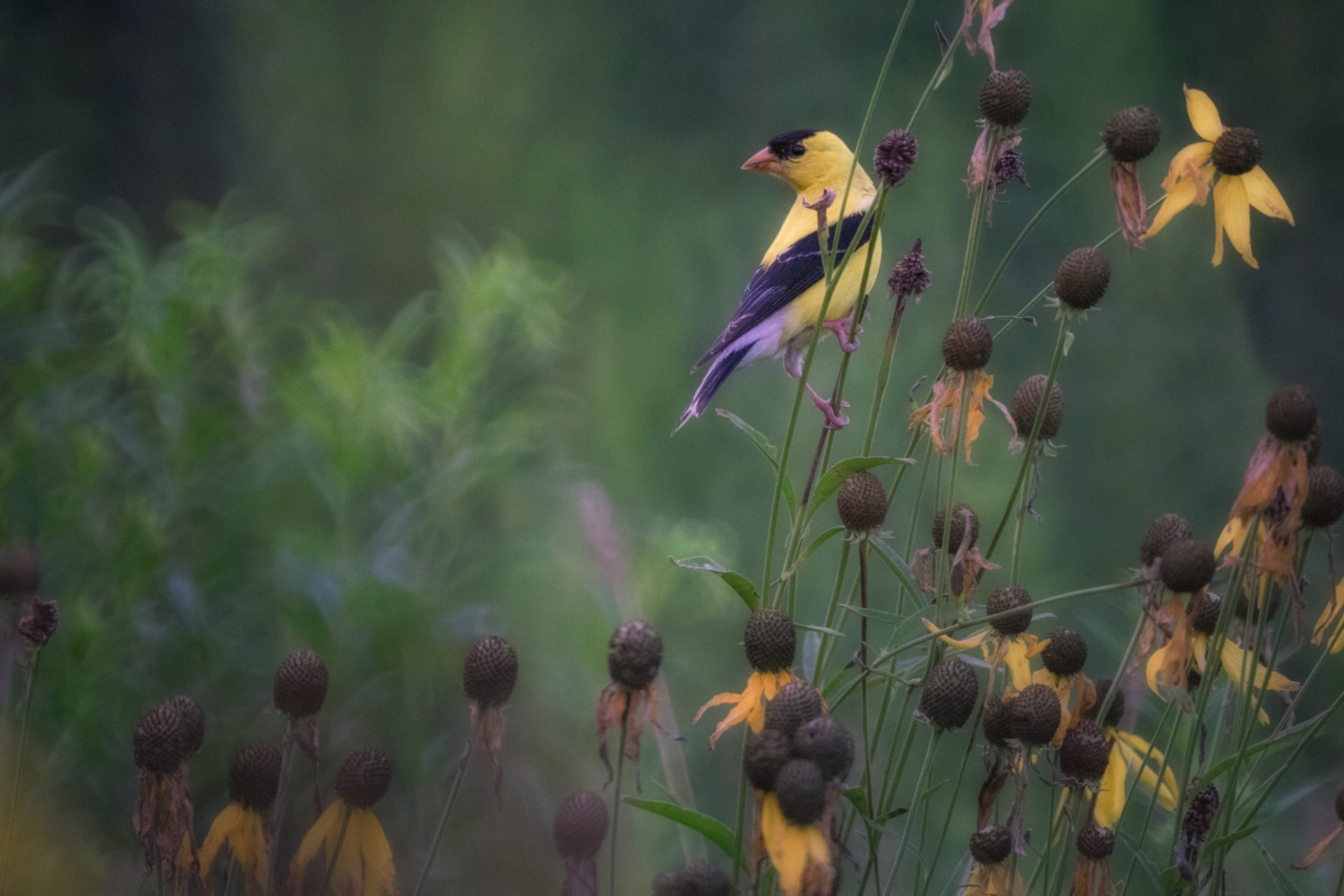Reflections on the Order of Interbeing
By Mitchell Ratner in October 2016

The Order of Interbeing is very dear to me. It has been a source of support, encouragement, and inspiration since I became a member in 1993. I am honored I have been asked to reflect on its history.
Reflections on the Order of Interbeing
By Mitchell Ratner in October 2016

The Order of Interbeing is very dear to me. It has been a source of support, encouragement, and inspiration since I became a member in 1993. I am honored I have been asked to reflect on its history. My professional training and work was as an applied anthropologist, which leads me to look at organizations and movements in terms of context and evolution.
THE BIRTH OF ENGAGED PRACTICE
In 1954, the French lost Vietnam to nationalist forces, and the country was divided into North and South. It was a turning point in Vietnam’s history. Thich Nhat Hanh, or Thay as we call him, was then a twenty-eight-year-old monastic intent on finding a meaningful, nonviolent way of responding to the suffering in his homeland. During that year of turmoil, Thay coined the term “engaged practice” and published some of his essays together in a book with the title Engaged Buddhism. For him, engagement had two meanings: one was engagement in everyday life—when you’re drinking your tea, you drink your tea—and the other was engagement in the social issues of one’s time. So 1954 can be called the beginning of engaged practice as we, as Order members, have come to know it.
In 1961, Thay came to the United States with a fellowship to study religion at Princeton University. He stayed in the US for two more years, teaching contemporary Buddhism at Columbia and at Princeton. Late in 1963, after the fall of the oppressive Diem regime, Buddhist leaders asked Thay to return to Vietnam to aid them in building a unified Buddhist movement for peace. Thay returned and helped create Van Hanh University and its School of Youth for Social Service (SYSS). In the midst of an intensifying war between North and South Vietnam, Thay and his SYSS students were deeply committed to offering assistance and moral support to residents of war-torn villages. Many SYSS volunteers were wounded or lost their lives while offering service to others.
In 1966, Thay founded the Order of Interbeing as a way of giving spiritual nourishment to the staff and students of the SYSS. Six of his close co-workers took vows to observe the Fourteen Mindfulness Trainings and were ordained as members of the Core Community. Many students, volunteers, and supporters participated as members of the Extended Community. They endeavored to live in accord with the spirit of the Fourteen Trainings, but did not take vows and were not ordained.
In the same year, shortly after Thay started the Order, he traveled back to the US to help Americans understand the great suffering caused by the superpowers fighting a proxy war in Vietnam. Thay’s book, Vietnam: Lotus in a Sea of Fire, explained to Westerners the social history of the conflict and the day-to-day suffering of the Vietnamese people. While in the US, Thay met with many politicians, writers, and activists including Secretary of Defense Robert McNamara, Thomas Merton, and Martin Luther King Jr. (Observing the intense infighting among American peace groups, Thay later quipped, and I paraphrase, “It is very odd that there is so little peace in the peace movement.”) Because of his forthright speaking out against the continuation of the war, he was told by the South Vietnamese government that it would not be safe for him to return to Vietnam.
Thay moved to France and continued to speak out against the war. In 1969 he was asked to lead the Buddhist Peace Delegation during the negotiations in Paris seeking to end the fighting in Vietnam. Though the Buddhist Peace Delegation could not directly participate in the talks, they were able to indirectly influence participating delegates. In 1973, an agreement was reached, the Paris Peace Accords, which established a cease-fire, ended direct American military involvement, and set ground rules for a negotiated peace. Two years later, in 1975, armed hostilities completely ended in Vietnam with the fall of Saigon and the collapse of the South Vietnamese government.
A GROWING ORGANISM
After the end of the war, still unable to return to Vietnam, Thay focused his humanitarian efforts on orphans and young children in Vietnam and the plight of Vietnamese refugees. In 1975 he established the Sweet Potatoes Retreat Center near Paris, and in the early 1980s moved the community to a more spacious property in the southeast of France, renaming it Plum Village.
In 1966, when Thay formed the Order of Interbeing, he wrote that he would not ordain anyone else into the Core Community for ten years. Because of Thay’s exile from Vietnam, the next ordination was not until 1981. At a ceremony in France, Thay ordained his niece, nineteen-year-old Anh Huong Nguyen, as the seventh member of the Order of Interbeing.
Other ordinations soon followed. By 1996, there were approximately two hundred members. That year, we had a gathering of about one hundred members at Plum Village. The gathered members struggled with how to make decisions by consensus. For example, many people were nominated for offices, but there was no agreed-upon way to decide on a single individual. It ended with a decision that everybody who was nominated would carry on that function. So we had eleven executive directors and seven treasurers. The result was that nobody was really in charge and little got done.
In 1999, Thay asked me and a few other people to become a Board of Advisors for the Order, to replace the non-functioning officers. We were charged with coming up with ways to nourish the Order and encourage its growth. Most of us were Westerners, and our initial efforts were focused on creating the structure of a typical nonprofit organization with a director, officers, and committees. When I talked with Thay about it, he said, “There should be a minimum of structure. We don’t wish to create a controlling bureaucracy.” What was needed, he said, was for the Order “to function as an organism.” For a while, many of us scratched our heads and thought, “I wonder what Thay is talking about?”
About this time, on retreats, Thay often talked about social insects such as termites, ants, and bees. A termite colony can be eight feet tall with thousands of termites, and no individual termite or group of termites is in charge. There are some fertile males called “kings,” and one or more fertile females called “queens,” but their role is strictly reproductive. The kings and queens have no decision-making powers, no idea of what is going on in the nest as a whole. Nor do any of the other termites. But they are good termites. They know how to be a termite just like we know how to practice. If you are a termite, you have a set of skills and a clear way of responding to varying situations. You know how to follow the scents of other termites. You know what to do when you find good food, and so on. Even though no termite knows exactly what everyone else is doing, collectively they perform a multitude of specialized functions that are needed for a healthy colony.
One of the ways many social insects operate is that they send individuals in new directions. At a picnic, for example, one ant wanders along a circuitous route and finds an unattended picnic basket. On returning to the colony, that ant communicates to other ants that there is a good source of food nearby. Other ants follow the trail of the first ant. Some time later another ant experiments and goes off the trail, a little bit to the right. It turns out this is a shortcut, and soon all the ants are going that way. Over time, by progressive improvement, the ants find the best route and form a straight line directly to the picnic basket. Collectively they manifest an “emergent structure,” in this case the best route to the food. From the outside it looks like a very intelligent engineer mapped out the route. But there was no engineer or engineering committee. It was a collective effort.
Eventually we understood better what Thay meant by “organism.” Essentially he was saying, “Create an organizational structure, if it is helpful. It’s all right to have officers, if you must. But I don’t want one group of people telling everyone else what to do. What is most important is for members of the Order of Interbeing to wholeheartedly practice mindfulness and for them to have ways of communicating.”
The Board of Advisors and others looked for ways to support conversations within the Order. One was to organize meetings of the Order at Plum Village-led retreats. Thay, Sister Chan Khong, and other monastic members often attended. Another strategy was to encourage regional gatherings so Order members and aspirants could practice together and share their experiences face to face. Those early gatherings evolved into the yearly retreats now offered at the three US monasteries and at Plum Village centers in other countries.
At a gathering of the Order at the 2004 Winter Retreat at Deer Park Monastery, Thay mildly reproached Order members for not yet having a website. Within a year we had the website with two URLs: OrderofInterbeing.org and TiepHien.org. The website offers resources to members, aspirants, and anyone interested in the Order of Interbeing and the Fourteen Mindfulness Trainings. By the next year we had a self-renewing directory of Order members, available on the website to ordained members of the Order. It is self-renewing in that it is up to each Order member to keep her or his contact information up to date.
Over the past twenty years there has been a tremendous increase in Order membership, coincident with the rising global popularity of the Plum Village practice, the creation of the Bat Nha Training Monastery in Vietnam in 2005, and the expansion of Plum Village monastic centers in the US, Europe, and Asia. Because of the Order’s decentralized growth, exact numbers are not available. In 2014 I sat down with several Plum Village monastics with recent experience in Vietnam and came up with a worldwide estimate of almost one thousand monastic Order members and about 2,500 lay members.
THREE ELEMENTS OF BEING AN ORDER MEMBER
At the OI Retreat at Blue Cliff Monastery this year, we considered what it means to each of us, personally, to live and practice as a member of the Order of Interbeing. The three elements I emphasized were practice, Sangha, and service.
Being an Order of Interbeing member means nothing if we do not practice. This includes both formal practice and informal or formless practice. It includes how we walk, how we talk with family members, how we respond to frustrations, and every other aspect of our daily lives. Ours is a 24/7 practice; there are no down times.
Our practice is also a practice of joy. We are encouraged to “dwell happily in the present moment.” In The Heart of the Buddha’s Teaching, Thay writes:
We who have been fortunate enough to encounter the practice of mindfulness have a responsibility to bring peace and joy into our own lives, even though not everything in our body, mind, or environment is exactly as we would like. Without happiness we cannot be a refuge for others. Ask yourself, what am I waiting for to make me happy? Why am I not happy right now?
In his talks to Order members over the past twenty years, Thay often singled out the importance of Sangha building. Anybody can practice the Fourteen Mindfulness Trainings. It takes no ceremony or ordination. However, if you wish to be ordained into the Order, you need to be a Sangha builder. You take responsibility for a Sangha. It is not that you need to facilitate the Sangha each week. However, you are one of the people who remember that somebody has to facilitate, somebody has to open the doors, somebody has to put the cushions away afterwards, and so on. You reach out to people facing difficulties. Your strong practice nourishes the whole Sangha, even if you say very little.
The third critical element is that in their origin, the Fourteen Mindfulness Trainings are bodhisattva vows. We commit to opening our hearts and finding ways to reduce suffering wherever we find it. Being an Order member means remembering that our deep aspiration is to be a bodhisattva.
This aspiration has come to mean a lot more to me over the last ten years, as my community, the Still Water Mindfulness Practice Center, has reached out as a community to be of service in various ways. It started with teaching mindfulness at The Shepherd’s Table, a nonprofit that provides help to people who are homeless or in need. We did that for about four months and then realized that formal meditation wasn’t what the clients most needed. So a group of us started volunteering at The Shepherd’s Table, coming when we could and offering our time and talents. For nine years now a group of us has come each week, on Wednesday morning, to staff the Clothes Closet so that clients will be able to take showers and get clean clothes. For three years now, once a month, a group from Still Water has prepared and served brunch to about one hundred people who are homeless or in need.
A year ago, a group of Still Water practitioners created and have continued to support a weekly mindfulness group at a Maryland women’s prison. They recently received permission to create a similar group at a men’s prison.
The Still Water Sangha has also worked for many years with the Israeli and Palestinian Sanghas, sending funds to support visits to Plum Village and supporting them in other ways. If things go well, a group from the Still Water community will give retreats in both Israel and Palestine this fall.
What I’ve learned over this past decade is that our concrete service to others is a liberating practice. The mental formation that often keeps us feeling disconnected and discontent is our attachment to a separate self. Interwoven into our thoughts, words, and actions there is self-cherishing, a prioritizing of “I, me, and mine.” Service loosens the bonds of our attachment to a separate self.
When we are with people who are suffering and in need, and offer to them what we can with a genuine desire to understand and to serve, the ego attachments deep in our consciousness are lessened. We are freer, they are freer, the whole cosmos is a bit more free. This incremental liberation occurs whether we are offering clothes and an encouraging smile to a person without a home, exchanging life lessons with a person in prison, sharing the fruits of our practice with someone less experienced, or listening compassionately to a friend going through a hard time. For me, this aspiring bodhisattva practice is not something optional, but rather is at the core of what it means to be a student of the Buddha, a student of Thay, and a member of the Order of Interbeing.
This article was adapted from a Dharma talk given at the Order of Interbeing Retreat at Blue Cliff Monastery on April 21, 2016. The talk was transcribed by Giovanna Zerbi and Diane Wyzga, and edited by Mitchell Ratner and Natascha Bruckner.


